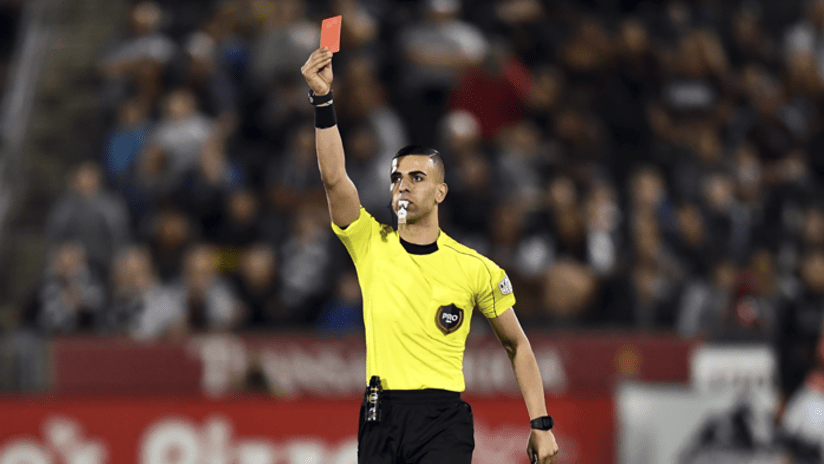Video review is coming to Major League Soccer. Leading up to Saturday’s league-wide launch, whitecapsfc.com is digging deeper into the four match-changing situations eligible for review. On Thursday we looked at goals and penalty decisions and today, we look at red cards and mistaken identity. Also read: the ins and outs of video review in MLS.
RED CARDS
Some of the most controversial and talked-about decisions in the game of soccer are the awarding of red cards. When a referee reaches for the back pocket, it can – and often does – have an astronomical impact on the result of a game.
It is no surprise, therefore, that red cards are one of four match-changing situations that are eligible for review with the new Video Review program, which is being implemented across MLS this Saturday, along with goals, penalty decisions, and cases of mistaken identity.
Specifically, the Video Assistant Referee (VAR) can recommend a review on direct red cards – not second yellows – if he or she feels the showing or non-showing of a red was a clear and obvious error. At that point, the centre referee would review the play on a pitchside monitor before making the final decision. Based on the review, the referee could decide to show a red card, rescind one, or even show a yellow.
There is one difference between red cards and goals/penalties, however, as it relates to video review.
With goals and penalties, the VAR will also check the direct build-up to the incident, known as the “attacking phase of play,” for any potential infractions that may have negated the goal or penalty. With direct red cards, however, that will only be the case if the red card is given for denying a potential goalscoring opportunity – rather than for serious foul play or violent conduct.
“For example, if a player gets elbowed in the face by an opponent and that player who was elbowed was offside at the time, does that negate the red card? Of course not,” said Howard Webb, a retired world-renowned FIFA referee who was brought in to head up the VAR program. “It would negate the awarding of a penalty or a goal, but it doesn’t negate the awarding of a red card for violent conduct.”
The reason for that, according to Webb, is that if a player is acting violently on the pitch, he should be punished regardless of what may have happened prior. Along the same lines, a restart of play does not negate the opportunity to eject a player for violent conduct.
“I’m sure that players will amend behaviour knowing that all the plays are going to be checked,” Webb said. “It’s going to work as a deterrent I’m sure.”
MISTAKEN IDENTITY
It doesn’t happen often, but there are certain instances in the sport of soccer – and most sports, for that matter – where a player is wrongly punished for someone else’s offence.
Enter Video Review.
Mistaken identity is one of four-match changing situations that are eligible for review along with goals, penalty decisions, and direct red cards. Here’s the important thing to note for mistaken identity: the VAR can only suggest a review in situations where mistaken identity led to disciplinary action – the showing of a yellow or red card.
Take the play below, for example.
Then Columbus Crew defender Michael Parkhurst (#4) was shown a red card when it was actually Tyson Wahl (#2) who committed the foul. The VAR would be able to intervene in this situation because disciplinary action was taken. The VAR can also intervene if a player on the wrong team is punished – once again, provided a card is shown.
“For example, a defender has been penalized for a handball and shown a yellow card,” said Webb. “On the video footage, it shows that the attacker actually handled the ball. Because the defender received a yellow card in that situation, then that can be reviewed and rectified under video review.”
And that’s all there is to it.


